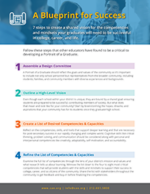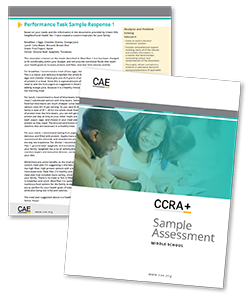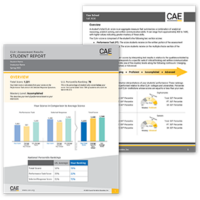 Help Students Build Portrait of a Graduate Skills
Help Students Build Portrait of a Graduate Skills
Ensure students develop the higher-order skills included in your Portrait of a Graduate and that are needed to take on the opportunities and challenges of the classroom and the workplace.

A Common Missing Piece: Measuring Portrait of a Graduate Skill Proficiency
For a Portrait of a Graduate to move beyond a vision, districts must determine how they’ll track student progress and measure success in building the identified skills and attributes. Common multiple choice assessments that are used to measure reading, math, and science comprehension aren’t effective in measuring higher-order skills. But these skills can be measured with well-crafted performance-based assessments. These types of assessments place students in real-world situations that require them to put skills like problem solving, critical thinking, and written communication to use. Data from performance-based assessments can be used to demonstrate students’ proficiency with Portrait of a Graduate skills and provide insights to teachers and administrators about the effectiveness of programs and curricula.
Why Proficiency Data Is Important
Evaluating the impact of your Portrait of a Graduate is crucial to demonstrate program effectiveness, to refine and enhance its implementation, and to ensure students are receiving the supports they need.

School budgets require evidence that dollars are being well spent. Creating a plan to demonstrate proficiency will help ensure your Portrait of a Graduate initiative is sustainable and has longevity.

Data can help you understand which areas of your portrait are working and how you can make adjustments to make it more effective. Using data-driven decision-making will ensure that your program remains effective and in tune with your goals.

Quality data will help you know which skills students are proficient in and which need more attention. These data can be used to tailor instruction and interventions to ensure students are getting the best support possible.
Critical Thinking Instructional Materials
In order to develop Portrait of a Graduate skills, students must:
- Learn about the skills, including why they are important, through explicit classroom instruction
- Apply the skills across curricula
- Reflect on how they have grown and how they can continue to develop their skills
CAE’s Higher-Order Skills Solution includes instructional materials, practice assessments, and teacher professional development to support the integration of critical thinking instruction into daily classroom lessons.














